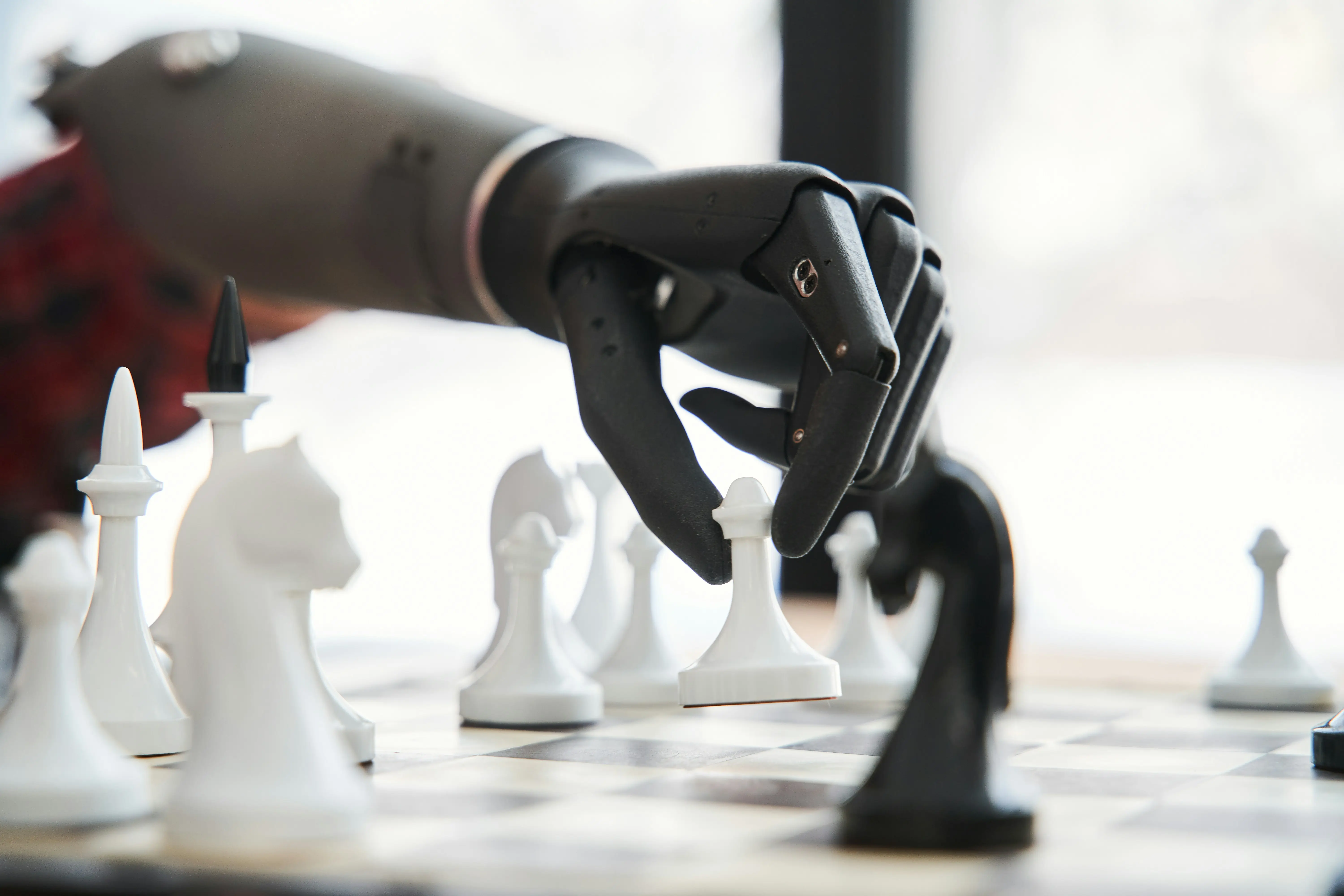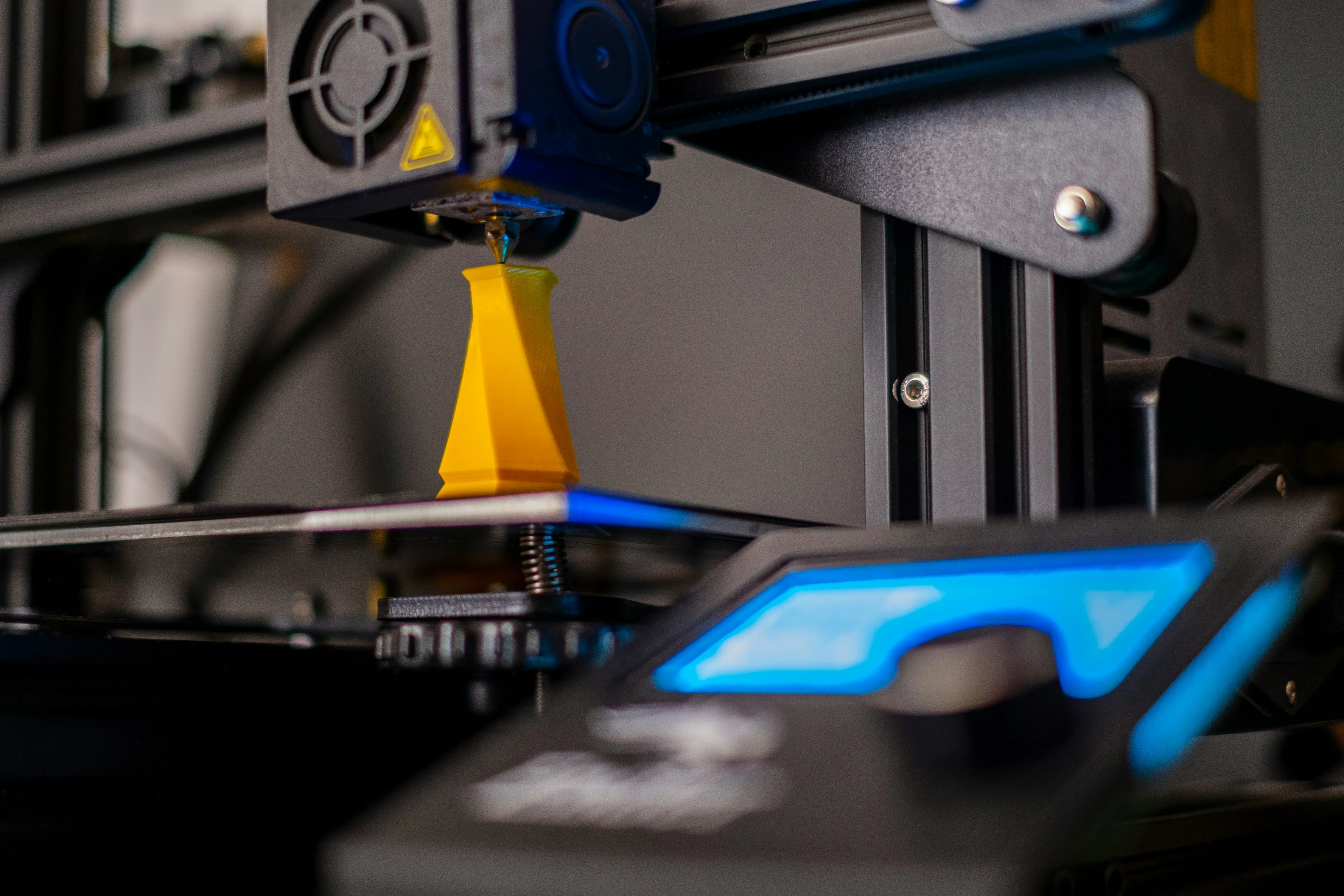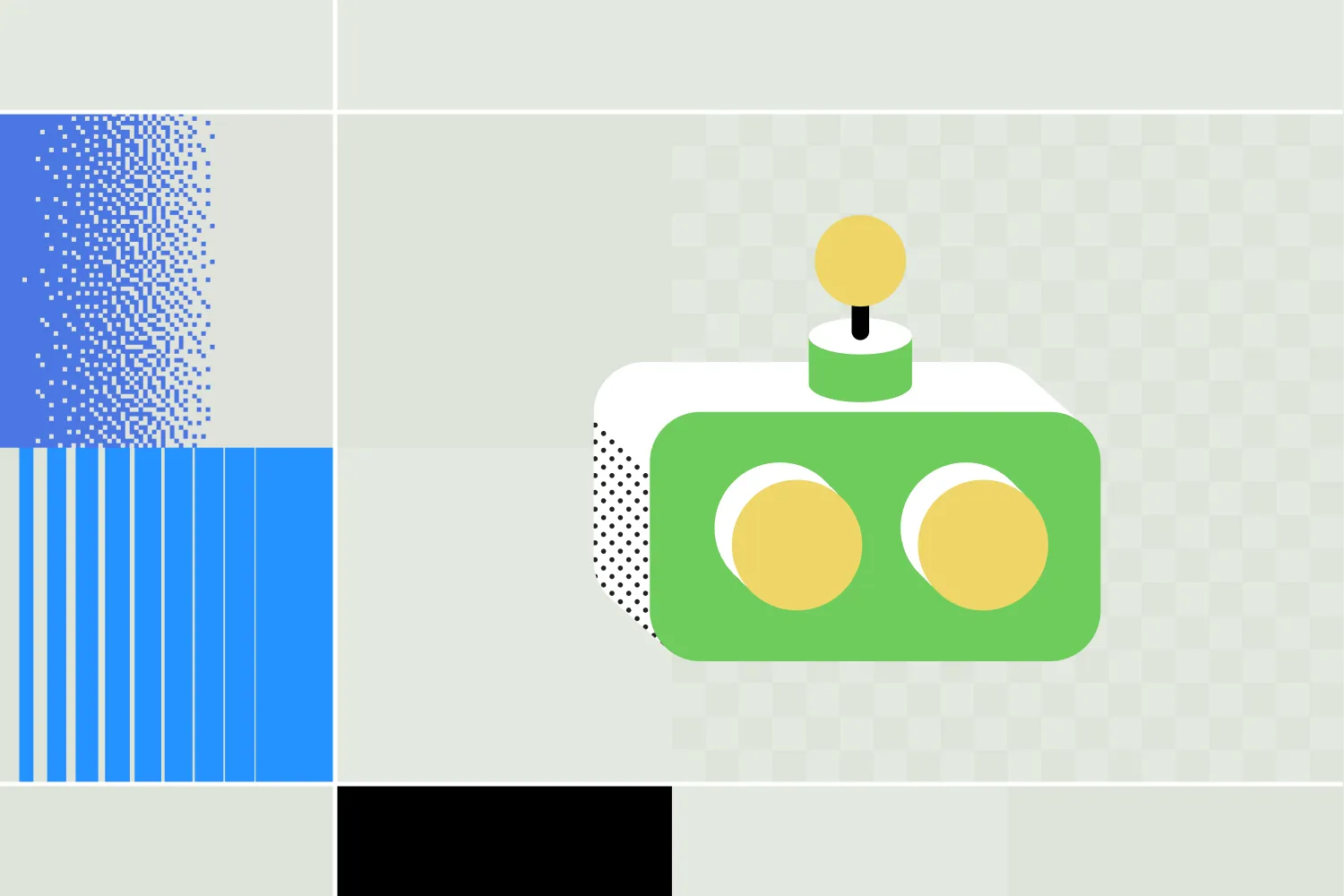- Ejen AI merangkumi sistem refleks ringkas yang bertindak balas terhadap input semasa hingga ejen canggih yang merancang, belajar, dan menyelaras tugas kompleks merentasi pelbagai bidang.
- Ejen refleks ringkas bertindak hanya berdasarkan keadaan semasa, manakala ejen refleks berasaskan model meningkatkan pembuatan keputusan dengan menggunakan model dalaman untuk menjejak dan meramal perubahan persekitaran.
- Sistem berbilang ejen melibatkan beberapa ejen AI yang bekerjasama atau bersaing, membolehkan aplikasi canggih seperti kereta pandu sendiri yang menyelaras di jalan raya atau mengurus rantaian bekalan yang rumit.
Ejen AI telah berkembang pesat dalam beberapa tahun kebelakangan ini. Dengan teknologi dan keupayaan yang semakin kompleks, kini terdapat pelbagai jenis ejen AI.
Ejen AI ialah perisian yang melaksanakan tugasan. Tidak seperti chatbot biasa, ia boleh bertindak bagi pihak pengguna.
Terdapat pelbagai jenis ejen AI, daripada termometer pintar dan kereta pandu sendiri, hinggalah ejen dengan antara muka chat. Semua kegunaan ini tergolong dalam salah satu daripada tujuh kategori utama ejen AI. Dalam artikel ini, saya akan kongsikan 7 jenis utama ejen AI beserta beberapa contoh ejen AI di dunia sebenar.
1. Ejen Refleks Ringkas
Ejen refleks ringkas ialah sistem AI yang membuat keputusan hanya berdasarkan input semasa dari persekitarannya.
Ia menggunakan satu set peraturan keadaan-tindakan untuk memadankan input yang diperhatikan kepada tindak balas tertentu. Apabila ia mengesan keadaan tertentu dalam persekitaran, ia melaksanakan peraturan yang sepadan.
Ia tidak mempunyai memori atau model dalaman dunia — jadi ia hanya berfungsi dengan berkesan dalam persekitaran yang boleh diperhatikan sepenuhnya di mana setiap keputusan boleh dibuat berdasarkan input semasa sahaja.
Contoh Ejen Refleks Ringkas
- Termostat yang menghidupkan pemanas jika terlalu sejuk
- Robot yang berpusing apabila melanggar dinding (contohnya, Roomba dengan kucing di atasnya)
- Sebuah chatbot asas yang membalas “Hello!” apabila pengguna berkata “Hi”
.webp)
2. Ejen Refleks Berasaskan Model
Ejen refleks berasaskan model ialah ejen AI yang membuat keputusan berdasarkan input semasa dan juga model dalaman dunia.
Berbeza dengan ejen refleks ringkas, jenis ini menjejak keadaan persekitaran dari semasa ke semasa. Ia menggunakan model — iaitu maklumat yang disimpan tentang cara dunia berfungsi — untuk mengisi kekosongan apabila persekitaran tidak dapat diperhatikan sepenuhnya.
Apabila menerima input baharu, ia mengemas kini keadaan dalaman, merujuk peraturan keadaan-tindakan, dan memilih tindak balas terbaik berdasarkan persepsi semasa serta maklumat daripada interaksi terdahulu.
Contoh Ejen Refleks Berasaskan Model
- Robot vakum yang mengingati susun atur bilik dan mengelak kawasan yang telah dibersihkan
- Ejen LLM yang meneruskan perbualan sambil menjejak input pengguna sebelum ini
- AI permainan yang bertindak balas bukan sahaja kepada apa yang dilihat, tetapi juga apa yang diketahui dari awal permainan

3. Ejen Pembelajaran
Ejen pembelajaran ialah ejen AI yang meningkatkan prestasinya dari masa ke masa dengan belajar daripada pengalaman.
Ia mempunyai empat komponen utama: elemen pembelajaran, elemen prestasi, pengkritik, dan penjana masalah.
Elemen prestasi memilih tindakan, manakala elemen pembelajaran menyesuaikan tingkah laku berdasarkan maklum balas. Pengkritik menilai hasil tindakan menggunakan piawaian yang ditetapkan, dan penjana masalah mencadangkan tindakan baharu untuk dicuba demi pembelajaran yang lebih baik.
Struktur ini membolehkan ejen menyesuaikan diri dengan perubahan, memperhalusi strategi, dan berfungsi dengan baik walaupun dalam persekitaran yang tidak dikenali.
Contoh Ejen Pembelajaran
- Ejen AI kripto yang melaraskan strategi dagangan berdasarkan prestasi pasaran
- Enjin cadangan yang semakin baik dalam mencadangkan produk berdasarkan tingkah laku pengguna
- Chatbot penjagaan kesihatan yang belajar daripada interaksi pesakit untuk meningkatkan ketepatan triage

4. Ejen Berasaskan Utiliti
Ejen berasaskan utiliti ialah ejen AI yang memilih tindakan berdasarkan hasil yang dijangka memberikan nilai keseluruhan atau "utiliti" tertinggi.
Daripada hanya berusaha mencapai matlamat, ejen ini menilai pelbagai kemungkinan hasil dan memilih yang memaksimumkan fungsi utiliti yang telah ditetapkan.
Ini membolehkannya menangani situasi di mana terdapat pelbagai cara untuk mencapai matlamat, atau di mana pertukaran perlu dibuat. Ia memerlukan keupayaan membandingkan pilihan, meramal akibat, dan menyusun hasil mengikut keutamaan atau keperluan.
Contoh Ejen Berasaskan Utiliti
- Chatbot jualan yang mengutamakan prospek berdasarkan kebarangkalian untuk menjadi pelanggan
- Bot dagangan saham yang mengimbangi risiko dan pulangan untuk memaksimumkan keuntungan jangka panjang
- Chatbot perniagaan yang menjadualkan mesyuarat untuk meminimumkan pertindihan dan memaksimumkan kemudahan
5. Ejen Hierarki
Ejen hierarki ialah ejen AI yang menyusun proses membuat keputusannya dalam beberapa lapisan atau peringkat, dengan peringkat lebih tinggi mengurus matlamat abstrak dan peringkat lebih rendah mengendalikan tindakan khusus.
Ejen ini memecahkan tugas kompleks kepada sub-tugas yang lebih kecil, dengan setiap peringkat hierarki bertanggungjawab untuk skop pembuatan keputusan yang berbeza.
Peringkat tinggi mungkin merancang strategi jangka panjang, manakala peringkat rendah mengendalikan data sensor serta tindak balas masa nyata. Komunikasi antara lapisan membolehkan ejen menyelaras objektif umum dengan pelaksanaan terperinci.
Struktur ini memudahkan pengurusan kerumitan dan penskalaan tingkah laku merentasi tempoh masa atau keutamaan yang berbeza.
Contoh Ejen Hierarki
- Dalam pembuatan, ejen peringkat tinggi merancang proses pemasangan manakala peringkat lebih rendah mengawal lengan robotik dan masa
- Dalam kilang pintar, lapisan berbeza mengurus jadual pengeluaran, penyelarasan mesin, dan operasi fizikal

6. Ejen Berasaskan Matlamat
Ejen berasaskan matlamat ialah ejen AI yang membuat keputusan dengan menilai tindakan mana yang akan membantunya mencapai matlamat tertentu.
Ejen ini diberikan satu atau lebih matlamat — hasil yang ingin dicapai. Ia menggunakan algoritma carian atau perancangan untuk meneroka kemungkinan urutan tindakan, kemudian memilih yang paling berpotensi membawa kepada matlamat tersebut.
Tidak seperti ejen refleks, ia tidak hanya bertindak balas — ia mempertimbangkan akibat masa depan sebelum bertindak. Ini menjadikannya lebih fleksibel dan berkeupayaan dalam persekitaran dinamik atau tidak dikenali, tetapi juga memerlukan lebih banyak pengiraan.
Contoh Ejen Berasaskan Matlamat
- Sistem navigasi yang mengira laluan terbaik ke destinasi
- AI penyelesai teka-teki yang mencari langkah yang akan membawa kepada teka-teki yang lengkap
- Lengan robotik yang merancang urutan pergerakan untuk memasang produk dengan berjaya
7. Sistem Berbilang Ejen (MAS)
Akhir sekali: sistem berbilang ejen.
Sistem berbilang ejen (MAS) ialah sistem yang terdiri daripada beberapa ejen AI yang berinteraksi dan bekerjasama (atau kadang-kadang bersaing) untuk mencapai objektif individu atau bersama.
Setiap ejen dalam sistem beroperasi secara bebas, dengan keupayaan, matlamat, dan persepsi persekitaran sendiri.
Ejen-ejen ini berkomunikasi dan menyelaras — sama ada secara langsung melalui mesej atau secara tidak langsung dengan memerhati perubahan dalam persekitaran. Sistem secara keseluruhan boleh menyelesaikan masalah yang terlalu kompleks atau tersebar untuk ditangani oleh satu ejen sahaja.
Sistem berbilang ejen boleh bersifat koperatif, kompetitif, atau gabungan kedua-duanya, bergantung pada reka bentuk dan matlamat.
Contoh Sistem Berbilang Ejen
- Kenderaan autonomi yang menyelaras di persimpangan untuk mengelakkan perlanggaran
- Sekumpulan bot kewangan mengurus pengebilan, pengesanan penipuan, dan pelaporan melalui automasi aliran kerja AI
- Sistem rantaian bekalan di mana ejen yang berbeza mengurus inventori, penghantaran, dan ramalan permintaan

Bina Ejen AI Tersuai
Tidak sukar untuk membina ejen AI yang disesuaikan – dan anda boleh melakukannya secara percuma.
Botpress menawarkan pembina aliran visual seret dan lepas, keselamatan bertaraf perusahaan, perpustakaan pendidikan yang luas, dan komuniti Discord aktif dengan lebih 20,000 pembina bot.
Platform kami yang boleh diperluas membolehkan anda membina sebarang chatbot tersuai dengan sebarang integrasi tersuai — dan Integration Hub kami penuh dengan penyambung sedia ada untuk saluran terbesar.
Mula membina hari ini. Ia percuma.
Soalan Lazim
Apakah 7 jenis ejen AI?
Tujuh jenis tersebut ialah: ejen refleks ringkas, ejen refleks berasaskan model, ejen berasaskan matlamat, ejen berasaskan utiliti, ejen pembelajaran, ejen hierarki, dan sistem berbilang ejen.
Adakah ChatGPT merupakan ejen AI?
Ya, ChatGPT boleh dianggap sebagai ejen AI — ia menerima input, memprosesnya, dan menghasilkan respons, selalunya menggunakan pendekatan berasaskan matlamat atau utiliti bergantung pada cara ia digunakan.
Apa itu ejen pintar, dan bagaimana mereka beroperasi dalam persekitaran digital?
Ejen pintar ialah entiti yang direka untuk bertindak dalam pelbagai persekitaran digital. Mereka mengumpul maklumat daripada persekitaran, menilai situasi semasa, dan melaksanakan tindakan untuk mencapai matlamat yang telah ditetapkan. Prestasi mereka dipengaruhi oleh tindakan luaran yang mereka lakukan dalam persekitaran yang boleh diperhatikan.
Bagaimana kecerdasan buatan memainkan peranan dalam fungsi ejen?
Kecerdasan Buatan memperkasakan ejen pintar dengan memberikan keupayaan untuk belajar, membuat penilaian, dan menyesuaikan diri. Ejen menggunakan AI untuk meningkatkan asas pengetahuan mereka, membolehkan mereka membuat keputusan yang lebih canggih dalam pelbagai persekitaran.
Apakah yang membentuk asas pengetahuan bagi ejen pintar?
Pengetahuan ejen pintar merangkumi maklumat tentang persekitaran, peraturan yang telah ditetapkan, dan pemahaman asas tentang situasi semasa. Pengetahuan ini menjadi asas kepada proses membuat keputusan mereka.
Apakah maksud elemen prestasi dalam konteks ejen pintar?
Elemen prestasi ejen pintar merujuk kepada keupayaan mereka untuk mencapai matlamat dan membuat keputusan yang mengoptimumkan tindakan dalam sesuatu persekitaran. Ia adalah komponen penting yang menentukan kecekapan dan keberkesanan ejen.
Bolehkah ejen beroperasi dalam struktur hierarki?
Ya, ejen hierarki ialah sejenis ejen pintar yang beroperasi dalam tahap yang berstruktur. Ejen peringkat tinggi mengawasi pembuatan keputusan umum, manakala ejen peringkat rendah mengendalikan tugas khusus dalam rangka kerja yang lebih luas. Struktur hierarki ini membolehkan operasi yang cekap dalam persekitaran yang kompleks.
Adakah ejen pintar beroperasi dengan kecerdasan terhad?
Ya, banyak ejen pintar beroperasi dengan kecerdasan terhad, bermakna mereka mempunyai skop pengetahuan dan keupayaan yang telah ditetapkan. Had ini membantu mereka memberi tumpuan kepada tugas dan persekitaran tertentu di mana kepakaran mereka paling relevan.





.webp)

